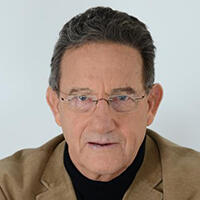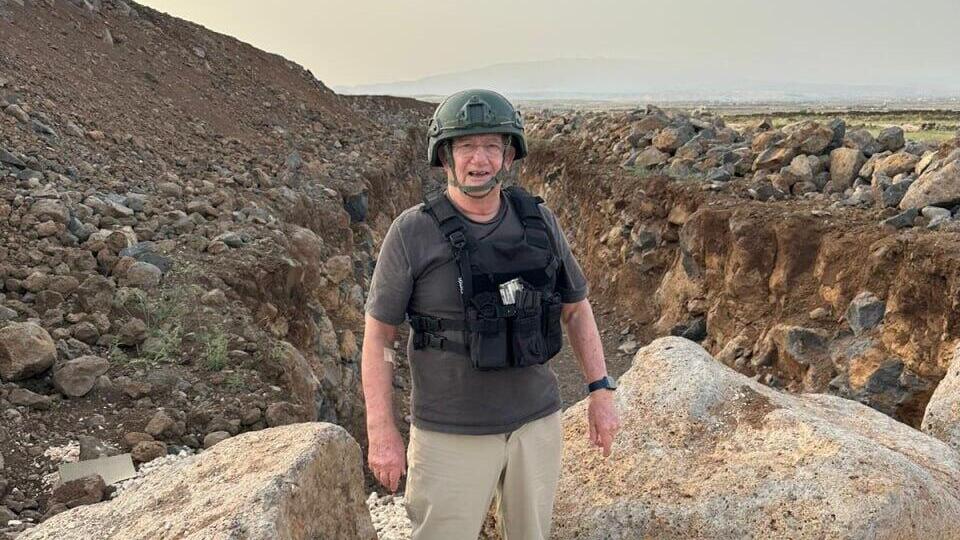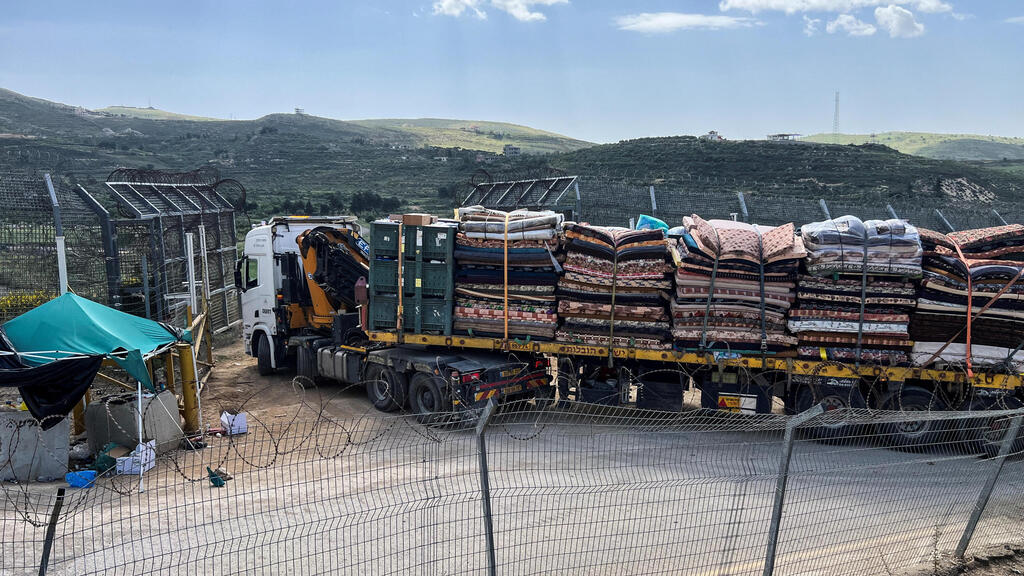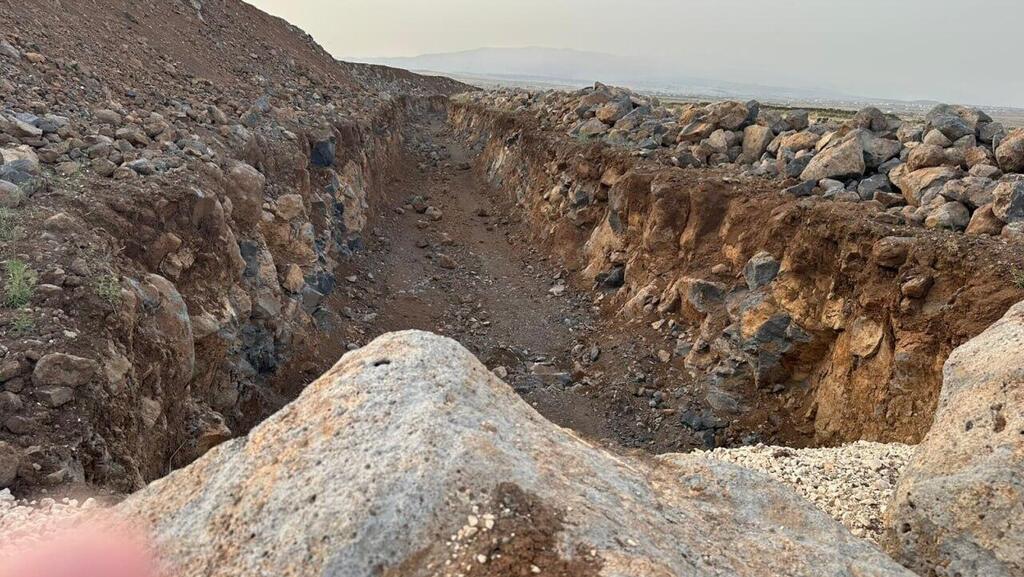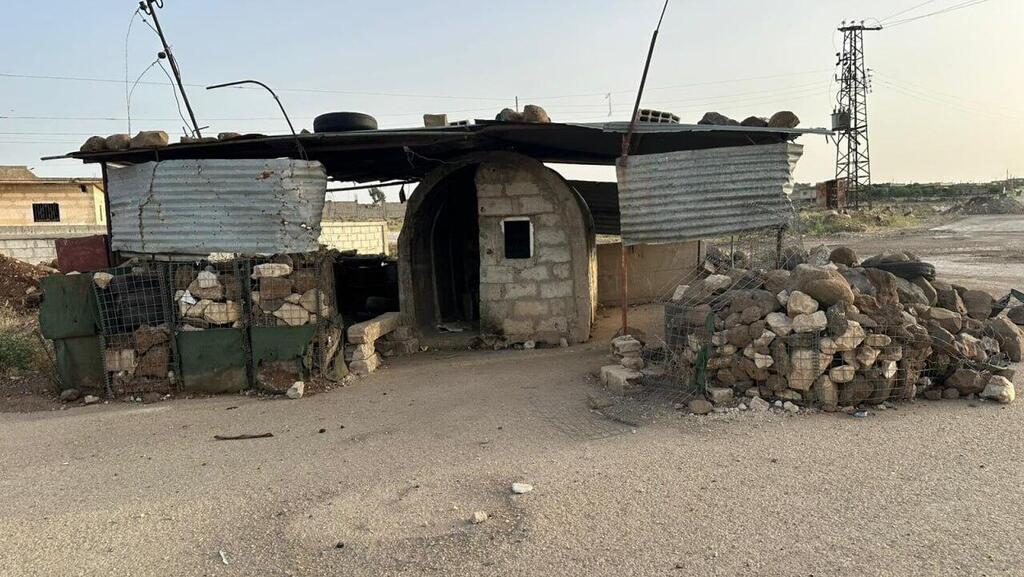The first thing that catches your eye when you travel through the Syrian Golan Heights is the destruction caused during the civil war. Although the buildings there have not been leveled as in Gaza, they are riddled with holes from bullets and shells and in some, the remnants of positions taken by local residents, in their fight against the Assad forces, are still visible.
There is no longer any agriculture there but for a few sheep, goats and the random herder walking between the giant boulders. The houses, though still standing, appear unsuitable for human inhabitants, but still, as we near, children run out to greet us.
"I didn't bring anything with me to give the kids," my companion, a Lt. Col. in the IDF, says. We've been driving alone and while I occasionally think that the quiet and calm around us is temporary, it appears that the IDF has succeeded in bringing a sort of normalcy to the area in a joint effort of engineering, military and diplomatic efforts.
It is based on the IDF's new border protection doctrine devised after the Hamas massacre of Oct. 7. It states simply that defense of the Israeli communities would not begin on the border. Any future enemy would encounter the IDF before approaching the frontier, which would be defended by a land barrier.
The Syrian Golan does not seem ominous, but the military commanders there remind me that Al-Sharaa's rebel forces, like ISIS, arrived in civilian pickups and took over vast areas. Therefore, any vehicle able to travel faster than 30 km/h. (18.5 mph) is considered a threat and the IDF outposts, the border's first line of defense, would identify its passengers and open fire, first to warn them away and later, they would shoot to kill.
The frontline outposts are not the only means now used by the IDF. There is intelligence gathering, surveillance by drones that can launch attacks and if necessary, use of the Air Force.
There are 10 frontline outposts inside Syrian territory, running along the Israel-Syria border from Mt. Hermon in the north to the convergence of Israel, Syria and Jordan borders, in El Hama in the south. They are capable of housing a brigade of forces along with heavy armor Corps machinery. Unlike the past IDF deployment along the border with Gaza, these outposts are built for a long stay and as a base for attack.
Here and there, along the drive, we see old Syrian military positions that explain how al-Sharaa's forces were so successful in overtaking the country. The positions are unfit and did not protect the troops inside. But that is all in the past.
In front of the new IDF outposts, the military controls the high ground. After diplomatic and military efforts, the other side agreed to avoid friction with the troops and to keep their distance.
West of the outposts runs the old barrier along the purple line, which is the internationally recognized border. It was meant to prevent tanks and heavy armor from crossing toward Israel. The new barrier would block any vehicle from overrunning Israeli communities. It is made up of boulders and ditches dug deep into the ground. The engineering effort to complete the entire length of the border continues and would ultimately force any traffic on the Syrian side to use existing roads and not open terrain.
The Israeli Druze are the first to benefit from the construction of the barrier because they own the heavy machinery used. They stand to make a fortune.
The Druze community is transforming in its attitude toward Israel. In the 1980s, they refused to accept Israeli citizenship, but after the Oct. 7 massacre and after 12 children were murdered in a Hezbollah missile strike on Majdal Shams, they changed course. They now want Israeli identity cards and even demand to join the IDF. For those who do, financial benefits are ensured.
Get the Ynetnews app on your smartphone: Google Play: https://bit.ly/4eJ37pE | Apple App Store: https://bit.ly/3ZL7iNv
There is a shift in the Druze community on the other side of the border as well. Since historically, Druze communities cooperate with the ruling forces around them, some were operatives of Hezbollah. But since the Shiite terror group was pushed away and the IDF is in control, they are no longer operating against Israel.
5 View gallery
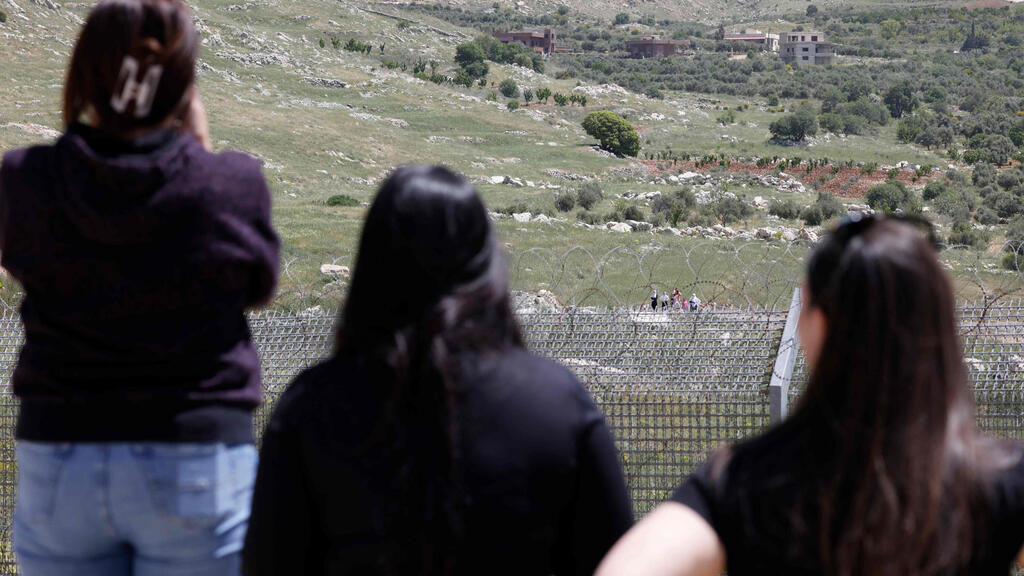

Druze on the Israeli side of the border meet their relatives on the Syria side
(Photo: Jalaa Marey / AFP)
The only area that could pose problems is in the south of the Golan Heights, between where the three borders converge to the west, and the road to Damascus to the east. It is home to Sunni Bedouin tribes, some of whom are Islamists and still work with ISIS. After clashes there resulted in the killing of Jihadist fighters, things calmed down.
Israel operates two medical clinics inside Syria, acting as a frontline emergency room, to deal with any injured locals and the IDF troops try to avoid direct friction with the local community on the Syrian Golan Heights, but act forcefully to block any armed groups from nearing them or the border.



